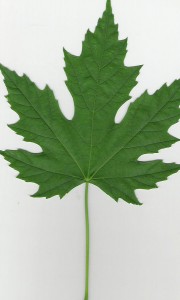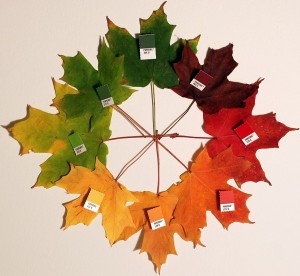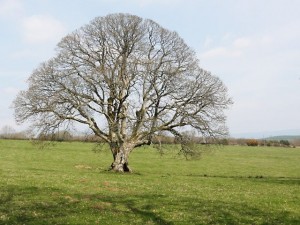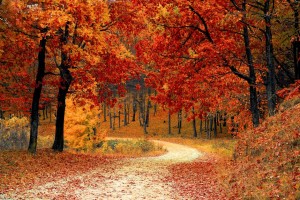By Christina Marvin
What do you imagine when you hear people describe spending time on rural mountainsides? Country landscapes often bring to mind scenes of seemingly endless trees stretched out over mountaintops and across plains. North Carolina in particular is home to a variety of different trees, one of which is the beautiful and resilient maple tree.

The Blue Ridge Parkway located outside of Ashville – Source
Maples provide shade, wood, and syrup on pancakes. But don’t let their sweet and giving nature fool you: maples trees are tough! Like ninjas of the natural world, they employ both stealth and stamina to conserve resources and survive cold seasons.
Stealth: Changing colors in the fall
In the fall, leaves transform from green to red, orange, and yellow. But brightly colored leaves don’t just look nice, they’re also a sign that trees have begun preparation for winter. During sunny months, trees like the maple rely heavily on the green pigment chlorophyll to convert light energy from the sun into sugars for food. When light is plentiful, they make so much chlorophyll that the green pigments mask all of the other colors.

In the spring and summer, maple leaves are green due to production of chlorophyll. – Source
As the days become shorter, and the sun shines less, chlorophyll is not only harder for the tree to make, but the decrease in light energy limits the tree’s ability to create additional food. Instead of wasting valuable resources on producing a pigment that no longer works well, a chemical process breaks down chlorophyll and signals the tree to start using stored food. When chlorophyll goes away, other pigments that were masked are revealed: orange carotenes, yellow xanthophylls, and red anthocyanins. Maple trees are especially cool to look at because they display a variety of pigments. Sugar Maples will turn orange-red while Black Maples become yellow and Red Maples bring out bright scarlet.

When maple trees stop producing chlorophyll in the cold, dark months, other color pigments can be seen. – Source
Stamina: Braving cold in the winter
In the winter, the maple tree has even less use for chlorophyll as the days are short and sunshine is scarce. Winter also brings challenges like cold, frost, and snow. Without a plan, the tree would see its leaves freeze and die during these cold months. Instead, it fares better if it purposefully drops its leaves before the frost can set in.
Other parts of the tree, such as the roots, branches, and trunk, are perfectly suited for winter. These hardy structures contain life-giving nutrients that travel to the leaves when needed. To conserve energy, the tree creates a layer of cells that separate the fragile leaves from the hardy branches. Without nutrients, the leaves simply fall to the ground.

Maple trees lose their leaves in the winter in order to conserve resources and protect hardier portions of the tree, like the trunk and branches. – Source
In nature nothing goes to waste and even the fallen leaves are recycled. Small organisms break down these leaves and turn them into fertilizer, replenishing the ground with nutrients and helping it retain rainwater.
Don’t worry, maples don’t stay bare for long! Once winter passes, they break down the cell layer separating the leaves from the rest of the tree, restore nutrients to the leaves, and bring back chlorophyll production. Maple trees are an amazing example of resilience and beauty in nature. Luckily, there are many areas in North Carolina to see these trees for yourself – take a trip and see the brilliant fall colors today!

Fall is a beautiful time of year in NC, where you can see many examples of fall foliage, not only in maple trees but lots of other kinds too! – Source
Edited by Sarah Marks and Sam Stadmiller
